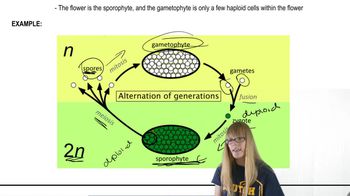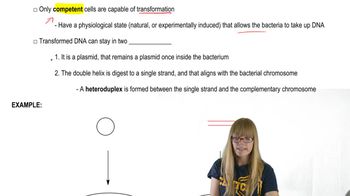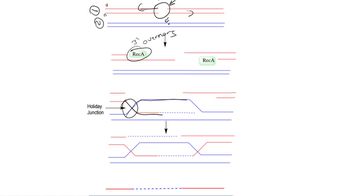Transformation is the process of what occurring with DNA?
Table of contents
- 1. Introduction to Genetics51m
- 2. Mendel's Laws of Inheritance3h 37m
- 3. Extensions to Mendelian Inheritance2h 41m
- 4. Genetic Mapping and Linkage2h 28m
- 5. Genetics of Bacteria and Viruses1h 21m
- 6. Chromosomal Variation1h 48m
- 7. DNA and Chromosome Structure56m
- 8. DNA Replication1h 10m
- 9. Mitosis and Meiosis1h 34m
- 10. Transcription1h 0m
- 11. Translation58m
- 12. Gene Regulation in Prokaryotes1h 19m
- 13. Gene Regulation in Eukaryotes44m
- 14. Genetic Control of Development44m
- 15. Genomes and Genomics1h 50m
- 16. Transposable Elements47m
- 17. Mutation, Repair, and Recombination1h 6m
- 18. Molecular Genetic Tools19m
- 19. Cancer Genetics29m
- 20. Quantitative Genetics1h 26m
- 21. Population Genetics50m
- 22. Evolutionary Genetics29m
5. Genetics of Bacteria and Viruses
Bacterial Transformation
Problem 10
Textbook Question
Describe the role of heteroduplex formation during transformation.
 Verified step by step guidance
Verified step by step guidance1
Understand the concept of transformation: Transformation is the process by which a cell takes up foreign DNA from its environment and incorporates it into its own genome. This is a key mechanism of horizontal gene transfer in bacteria.
Define heteroduplex formation: A heteroduplex is a DNA molecule formed when two single strands of DNA from different sources anneal to each other. This occurs during transformation when the foreign DNA aligns with the recipient's DNA.
Explain the alignment process: During transformation, the foreign DNA enters the recipient cell and aligns with a homologous region of the recipient's DNA. This alignment is facilitated by complementary base pairing.
Describe the role of heteroduplex formation: The heteroduplex forms when the foreign DNA strand pairs with the recipient's DNA strand. This pairing allows for the integration of the foreign DNA into the recipient's genome, potentially introducing new genetic traits.
Highlight the importance of mismatch repair: After the heteroduplex forms, the cell's mismatch repair system may recognize and correct any base-pair mismatches between the foreign and recipient DNA strands. This ensures the stability and functionality of the integrated DNA.
 Verified video answer for a similar problem:
Verified video answer for a similar problem:This video solution was recommended by our tutors as helpful for the problem above
Video duration:
1mPlay a video:
Was this helpful?
Key Concepts
Here are the essential concepts you must grasp in order to answer the question correctly.
Heteroduplex Formation
Heteroduplex formation occurs when two strands of DNA from different sources pair together, creating a hybrid molecule. This process is crucial during genetic transformation, as it allows for the incorporation of foreign DNA into a host organism's genome. The resulting heteroduplex can lead to genetic variation and the expression of new traits in the transformed organism.
Recommended video:
Guided course

Formation of Plant Gametes
Transformation
Transformation is a process by which a cell takes up foreign DNA from its environment and incorporates it into its own genome. This mechanism is a key method of horizontal gene transfer in bacteria, enabling them to acquire new genetic traits, such as antibiotic resistance. Understanding transformation is essential for studying genetic engineering and biotechnology applications.
Recommended video:
Guided course

Transformation
Genetic Recombination
Genetic recombination refers to the process by which genetic material is rearranged during cell division or through mechanisms like transformation. In the context of heteroduplex formation, recombination allows for the exchange of genetic information between the host DNA and the incoming foreign DNA, leading to genetic diversity. This process is fundamental in evolution and the adaptation of organisms to changing environments.
Recommended video:
Guided course

Recombination after Double Strand Breaks
Related Videos
Related Practice
Multiple Choice
525
views
1
rank


